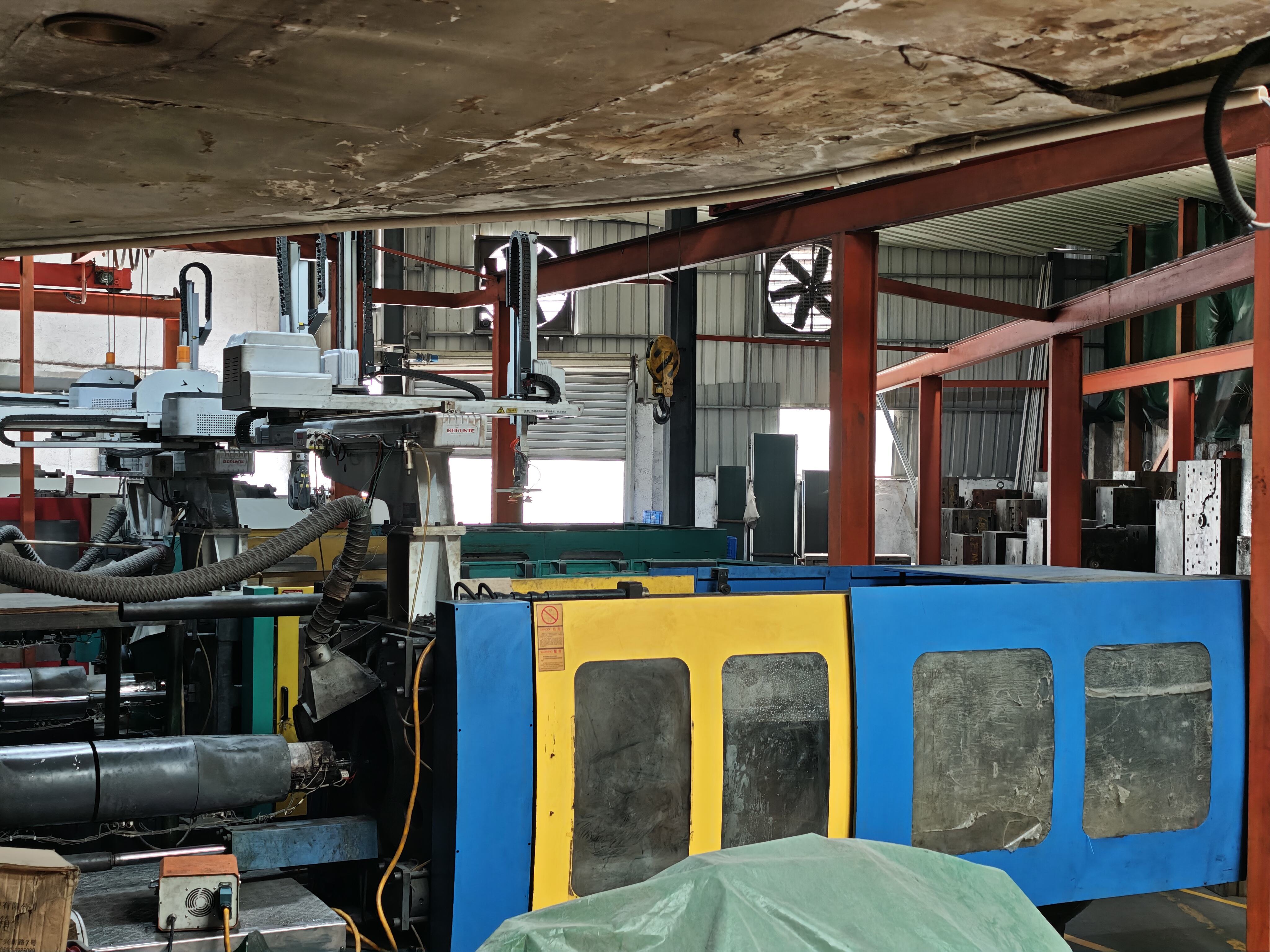持続可能な製造の推進における射出成形の役割
現代の生産で射出成形が持続可能性を支援する方法
射出成形プロセスは、使用される材料をより正確に管理できるため、製造業者が環境に優しい方法で生産を行うのに大きく貢献します。エネルギー省が2023年に発表したデータによると、従来のCNC加工などの技術と比較して、この方法は廃棄物を約95パーセント削減します。現代の高度な制御技術により、工場は製品をほぼ正確な形状で一度に製造できるため、生産後の余分なプラスチック廃棄物が非常に少なくなっています。世界的に工業用ポリマー廃棄物が毎年2,600万トンを超えている現状を考えると、これは非常に重要な点です。また、現在では多くの工場が射出成形機を再生可能エネルギーで稼働させています。プラスチック欧州(Plastics Europe)の報告によると、2018年以降、業界全体で成形品1トンあたりの二酸化炭素排出量が約40パーセント減少しています。このような進展により、企業は循環型経済の目標に向けて取り組みやすくなっています。さらに、リグラインドシステムを活用することで、部品の強度特性を維持しながら、製品に使用される原材料の30〜50パーセントを再生材料で賄う工場も存在します。
ESG目標との整合性と規制遵守
射出成型は国連の17の持続可能な開発目標(SDGs)のうち8つに関与しており、特に「産業と技術革新(目標9)」および「つくる責任 つかう責任(目標12)」に重点を置いています。欧州連合(EU)の使い捨てプラスチック製品規制やカリフォルニア州のSB-54法などの規制により、企業は新たなプラスチック使用を削減するための循環型システムへと移行しています。ICISが2023年に実施した調査によると、メーカーの約3分の2が現在、ESG基準を満たすパートナー企業を積極的に探していることが明らかになりました。ISO 14001の認証を取得した工場は、他の工場と比較して顧客の維持期間が平均で22%長いという結果もあります。さらに今後も、ISO 46001のような水資源効率化に焦点を当てた規格が業界をさらに前進させるでしょう。このように、企業は地球に優しくすることと利益を追求することの両立が可能なのです。
射出成型のカーボンフットプリントを削減する省エネ技術
電動式対油圧式射出成型機:効率性と環境への影響
より多くの製造業者がグリーンイニシアチブの一環として古い油圧式システムを電動射出成型機に置き換えています。新型の電動式には高効率なVFD(可変周波数ドライブ)が搭載されており、作業中にモーター速度を調整できるため、伝統的な油圧プレスと比較して約40〜60%の電力を節約できます。また、常に油圧液をポンプする必要がないため、ポンモンの2023年の研究によると、各生産サイクルにおいて工場のカーボンフットプリントを約35%削減することが可能です。環境への影響とコスト削減の両面から見れば理にかなっています。
スマート製造および予知保全によるエネルギー最適化
IoT対応センサーや機械学習アルゴリズムにより、射出成形工程におけるエネルギー使用をリアルタイムで監視できます。予知保全システムは、モーターの温度や圧力の傾向を分析して故障発生前に部品交換を計画するため、予期せぬ停止時間を25%削減し、エネルギーの無駄を18%削減します(McKinsey 2023)
ケーススタディ:オール電動成形ラインで30%のエネルギー削減を達成
昨年実施された実際の工場テストでは、15台の古い油圧式マシンをすべて電動プレスに交換した結果、年間電力使用量が2.1ギガワット時減少しました。これは、約190世帯分の年間家庭用電力をまかなえる量です。この企業は、電気料金の削減と炭素税ペナルティを回避したことで、わずか2年弱で投資額を回収しました。これは、コスト削減と環境責任の両立を目指す工場にとって、完全電動化が理にかなっていることを示しています。
重要な 教訓 :
- 電動マシンは油圧式マシンと比較して50~75%のエネルギー削減を実現
- 予測分析により、既存システムにおけるエネルギー廃棄を12~20%防止します
- 電動ドライブでの改造により、3年以内に投資収益率(ROI)を実現できます
持続可能な材料と射出成型における循環型経済へのシフト
高機能成型プロセスへの再生プラスチックの統合
2023年の最新の素材効率に関する研究によると、現代の射出成型技術は、技術用ポリマーにおいて45%以上の再生材を含有しても品質の実質的な低下なしに処理できることが示されています。改良された分別方法と高度な精製プロセスにより、工業廃プラスチックや消費者用グレードの素材を、自動車部品、電子機器、さらには医療機器のハウジングなどにも使用できるようになり、製造業者は新規のプラスチックにそれほど依存しなくても済むようになっています。朗報として、これらの再生素材は十分な性能も維持しており、引張強度は18〜22MPaの範囲にあり、140度を超える温度でも熱変形に耐えることが可能です。
生分解性プラスチックおよびバイオベースプラスチック:PLA、PHA、およびその産業用途
さまざまな業界で、ポリ乳酸(PLA)やポリヒドロキシアルカノエート(PHA)などのバイオベース材料の利用が増加しています。特に、使い捨て包装や一部の農業機械でその傾向が顕著です。例えばPLAは、産業用コンポスト施設に入れるとわずか6か月から12か月で分解します。これは、通常のプラスチックが約500年もの間、環境に残るのと比べて非常に速い分解速度です。この速やかな分解能力により、PLAは欧州連合(EU)の使い捨てプラスチック指令のすべての要件を満たしています。また、PHAは塩水環境でも化学物質に対して高い耐性を示します。この特性により、PHAは海水に常にさらされる漁網や海岸沿いの構造物などに適しています。
| 財産 | 従来のプラスチック | バイオベース代替素材 |
|---|---|---|
| 分解期間 | 100~500年 | 6か月~5年 |
| 炭素足跡 | 2.5 kg CO2/kg | 0.8~1.2 kg CO2/kg |
| リサイクル適合性 | 12~15サイクル | インフラが限られている |
性能とライフエンドにおける課題:従来プラスチック vs 持続可能なプラスチック
持続可能な素材にはグリーンメリットがありますが、現実的な課題もあります。約38%の製造業者は、ABSやポリカーボネートなどの従来のプラスチックと同等の強度や耐久性を得るのが難しいと感じています。2024年に出された最新の循環型経済レポートによると、複数の素材から作られた製品に関しては、リサイクルシステムに依然として大きなギャップがあります。PLA素材の製品のうち、実際に適切なコンポスト施設に運ばれ、分解されるのは全体の約14%に過ぎません。こうした問題に対処するため、デザイナーたちは製品を後で分解しやすくするモジュラーデザインを取り入れ始めています。これは新しい持続可能な素材を開発する際に、製品のライフサイクル終了後の処理について考慮することがいかに重要であるかを示しています。
閉鎖型システムと射出成形工程における廃棄物の最小化
生産プロセス内でのリアルタイムグラインドおよびスクラップリサイクル
現代の射出成形工場の多くは、生産廃棄物の85〜95%を再利用することに成功しています。それらの廃棄物は、すぐにスプルーの端材や不良品を処理する閉ループシステムによって処理されます。企業がこれらの材料を工場内で粉砕して再利用することで、品質にほとんど影響を与えることなく生産プロセスに再投入することが可能です。自動車業界ではこの手法が特に広まりつつあり、2024年の業界レポートによると、あるサプライヤーでは材料廃棄を約30%削減したとされています。これは、精度が最も重要となるインテリア部品やダッシュボード部品の製造において特に効果的です。
プラスチック部品開発におけるサステナビリティ設計 (DFS)
持続可能性設計(Design for Sustainability)の概念は、よくDFSと略され、標準的な形状を作り、不必要なプラスチックを減らすことで、材料をより効率的に使うことを目指しています。例えば、モジュラーデザインがあります。接着剤や接着性の素材に頼る代わりに、製品をスナップフィット方式で組み立て可能な部品で構築することで、後にリサイクルする際に分解がずっと簡単になります。DFSのもう一つの手法は部品の統合です。企業が複数の部品を一体成型されたユニットにまとめることで、組立にかかる時間を短縮するとともに、製造時のエネルギー消費を削減できます。実際に、ある医療機器メーカーが使い捨てデバイス用ハウジングにDFSの原則を導入した結果、材料費が約22%削減されました。こうした削減は企業の利益に貢献するだけでなく、業界全体でよりグリーンな製造プロセスを実現するための具体的な進展でもあります。
クローズドループ製造および廃棄物削減におけるベストプラクティス
| 戦略 | 影響 | 導入事例 |
|---|---|---|
| 現場での材料回収 | 新品樹脂需要を40~60%削減 | 成形機に統合されたグラニュレーター |
| リーン製造プロトコル | サイクルタイムの無駄を15~25%削減 | AI駆動のプロセス最適化 |
| 従業員トレーニングプログラム | スクラップ分別精度を98%に向上 | 生産チームのための選別ワークショップ |
上位の工場はこれらの戦略を再生可能エネルギーおよび予知保全と組み合わせ、ゼロ廃棄に近づいています。ある施設は、ループ型操業をスマート製造システムと連携させることで、12か月以内にISO 14001認証を取得しました。
地元調達とオンショアリング:近接性を通じたサプライチェーン排出の削減
地域内射出成型生産の環境的利益
企業が原材料の供給地や製品の出荷先に近い場所で射出成型生産を行うことで、多くのサプライチェーンを悩ませている輸送時の排出量を削減できます。IMRGが2025年に発表した分析によると、製品を海洋を越えて輸送する代わりに地元で製造することで、物流のカーボンフットプリントを18〜22%削減することが可能です。サプライヤーや顧客に近い立地に拠点を置くことで、大量の燃料を燃やし続ける大型船への依存が減らせるのです。さらに、新しい地域の工場ではリソースの再利用も非常に効率的に行われるようになっています。これらの施設の多くでは、水の浪費を最小限に抑える密閉式冷却システムにより、工程で使用する水の約95%を再利用できるようになりました。
輸送排出量の削減とサプライチェーンのレジリエンス強化のための戦略的オンショアリング
製品の販売地に近い場所で射出成形の生産を行うことは、環境問題への対応と並行して運用上の課題を軽減する手段となります。CHIPS Actなどの政策の最近の推進により、企業が製造を自国に戻す動きが加速しています。これにより、全産業排出量の約12%を占める長距離輸送の必要性が減少します。現地で生産を行うことで、海外サプライヤーと比較して約40%の待ち時間の短縮が可能となり、遅延や予測不能な貿易問題への対処にかかる手間も大幅に軽減されます。ESG目標に注力する製造業者にとって、炭素排出量の削減とより強固なサプライチェーンの両立というこの利点により、生産拠点を自国に戻すことは今日の市場において、単なる合理的なビジネス判断にとどまらず、ますます必要不可欠なものとなっています。
よくある質問
噴霧型とは?
射出成形は、金型に材料を注入して部品を製造する加工プロセスです。一般的にプラスチック製品に使用されますが、金属、ガラス、その他の素材にも応用可能です。
射出成形は、持続可能な製造においてどのような役割を果たしますか?
射出成形は、材料の廃棄を削減し、高効率の省エネルギー技術を活用し、リサイクルの取り組みを支援し、さまざまな環境規制にも適合することで、持続可能な製造を推進します。
射出成形には再生材料を使用できますか?
はい、品質を損なうことなく最大45%の再生材料を使用することが可能です。改良された精製プロセスにより、産業用および家庭用グレードの再生プラスチックの両方が利用できます。
油圧式マシンと比較して、電動射出成形機の利点は何ですか?
電動射出成形機は、従来の油圧式マシンと比較して40~60%少ないエネルギーを使用するため、炭素排出量と運用コストを大幅に削減します。

